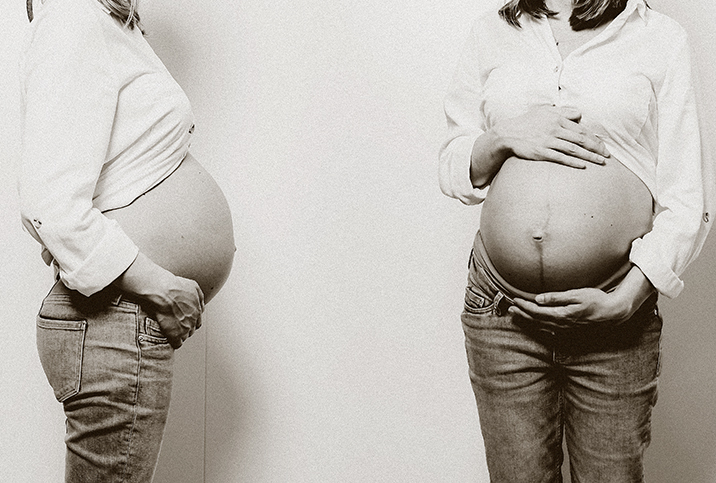Is a Myomectomy the Right Treatment for My Uterine Fibroids?

Uterine fibroids are benign (noncancerous) tumors that grow inside the uterus. They're common, but fibroids may cause a range of symptoms. For women who want to maintain their fertility, a myomectomy can be an effective treatment option.
What should you know about uterine fibroids?
Up to 80 percent of women develop fibroids during their childbearing years, according to the Office of Women's Health in the United States Department of Health and Human Services.
"Fibroids can cause a range of symptoms, from pain and discomfort to heavy menstrual bleeding," said Himali Maniar, M.B.B.S., an OB-GYN at Nisha Women's Hospital and IVF Centre and associated with ClinicSpots in South Bopal, Ahmedabad, India.
If you are suffering from uterine fibroids and want to preserve your uterus and fertility for future pregnancies, myomectomy may be right for you.
Most uterine fibroids do not cause issues—the can be asymptomatic—but some can impact fertility. Fibroids are estimated to be the cause of infertility in 2 percent to 3 percent of women and are associated with a higher risk of pregnancy loss, suggested a 2021 report.
There are several treatment options for uterine fibroids, pending the severity of a woman's symptoms, the location of the fibroids and her future pregnancy goals. For women who want to preserve fertility, a myomectomy is often the surgery of choice.
What is a myomectomy?
"For women who are suffering from fibroids, myomectomy is one potential treatment option," Maniar said. "In comparison to more invasive procedures like hysterectomy, myomectomy is generally preferred because it preserves fertility in women who want to have children in the future."
"The best candidate for a myomectomy, as opposed to other fibroid treatments, is someone who plans to bear children and wants to keep their uterus," said Monte Swarup, M.D., an OB-GYN in Chandler, Arizona, and the founder of HPV HUB.
There are three types of myomectomy, according to Mayo Clinic:
- Abdominal myomectomy. An abdominal incision is made to access the patient's uterus and remove the fibroids. This incision is usually horizontal across the "bikini line" but could be vertical instead. This is considered a major surgical procedure.
- Laparoscopic myomectomy. This is a minimally invasive procedure where several small abdominal incisions are made to access and remove the fibroids. If the fibroids are too big or too numerous, an abdominal myomectomy may be required instead.
- Hysteroscopic myomectomy. This type of surgery is solely used for submucosal fibroids. With this procedure, instruments are inserted into the vagina to access the uterus and remove the fibroids.
Are you a good candidate for a myomectomy?
"A myomectomy is typically recommended for patients with symptomatic fibroids that have not responded to other treatments," Maniar said.
Doctors take several factors into account when determining a patient’s suitability for a procedure to remove uterine fibroids:
- Patient age
- Medical history
- Size and location of the fibroids
However, this procedure isn't right for everyone.
"Myomectomies can be quite complex, depending on the size and location of the fibroids," Maniar said. "For this reason, some people may not be suitable candidates for this procedure. Women with numerous small fibroids located deeply within their uterus wall may not be able to have a myomectomy. Additionally, women who are not candidates for any type of surgery may not be suitable for this procedure."
And keep in mind that fibroids can continue to grow or recur after a myomectomy, right up until menopause.
What should you expect during surgery?
If your doctor determines you are a good candidate, your experience will vary depending on the type of myomectomy the surgeon performs. For each of the three options, you will be under general anesthesia.
Abdominal myomectomy and laparoscopic myomectomy may require the patient to spend several nights in the hospital, and recovery can take up to six weeks, according to University of California, San Francisco Health.
Women who undergo the laparoscopic procedure typically experience less postoperative pain, less risk of fever and a shorter stay in the hospital compared to abdominal myomectomy, according to a 2014 review in the medical database Cochrane Library.
For both abdominal and laparoscopic procedures, you'll need to take antibiotics to reduce the risk of infection at the surgical site. You will have scarring following the procedure. Future pregnancies may require a C-section delivery.
A hysteroscopic myomectomy is considered an outpatient procedure and most women can go home following a short period of observation. Recovery time is much faster with this procedure; you should feel fully recovered in less than a week.
What symptom relief can you expect after a myomectomy?
After the surgery, you can expect several benefits. Symptom relief after a myomectomy, according to Swarup, includes:
- Reduction in heavy menstrual bleeding
- Reduction in pain associated with menstrual cycles
- Decreased pelvic pressure
- Possibly improved fertility, though more research is needed
"It is important to note that some symptoms may recur due to fibroids regrowing after surgery," Maniar said. "In some cases, following a successful myomectomy, fibroids may grow back in the same area or in a different location."
There are several reasons fibroid regrowth occurs:
- Presence of undetected fibroids prior to surgery
- Growth of existing fibroid tissue after surgery
- New fibroid growth due to hormonal changes
"This is more common when a patient is younger and has more time in their premenopausal years. Fibroids tend to shrink and their symptoms dissipate with menopause," Swarup said.
More research is needed into the recurrence of fibroids following a procedure, but studies indicate fibroids are more likely to regrow after the laparoscopic myomectomy than after an abdominal one.
A 2017 study published in the Journal of Obstetrics and Gynaecology Research indicated the recurrence rate was 76.2 percent for laparoscopic myomectomy versus 63.4 percent in abdominal myomectomy at eight years post-surgery.
"It is important for women to follow up with their doctor regularly following a myomectomy and be aware that their symptoms may return as a result of regrowth," Maniar said.
The bottom line
If you are suffering from uterine fibroids and want to preserve your uterus and fertility for future pregnancies, myomectomy may be right for you.
"Myomectomy is an effective treatment option for women with symptomatic fibroids who are suitable candidates," Maniar concluded. "Women should discuss all potential risks and benefits associated with this procedure before making any decisions about undergoing a myomectomy."


















